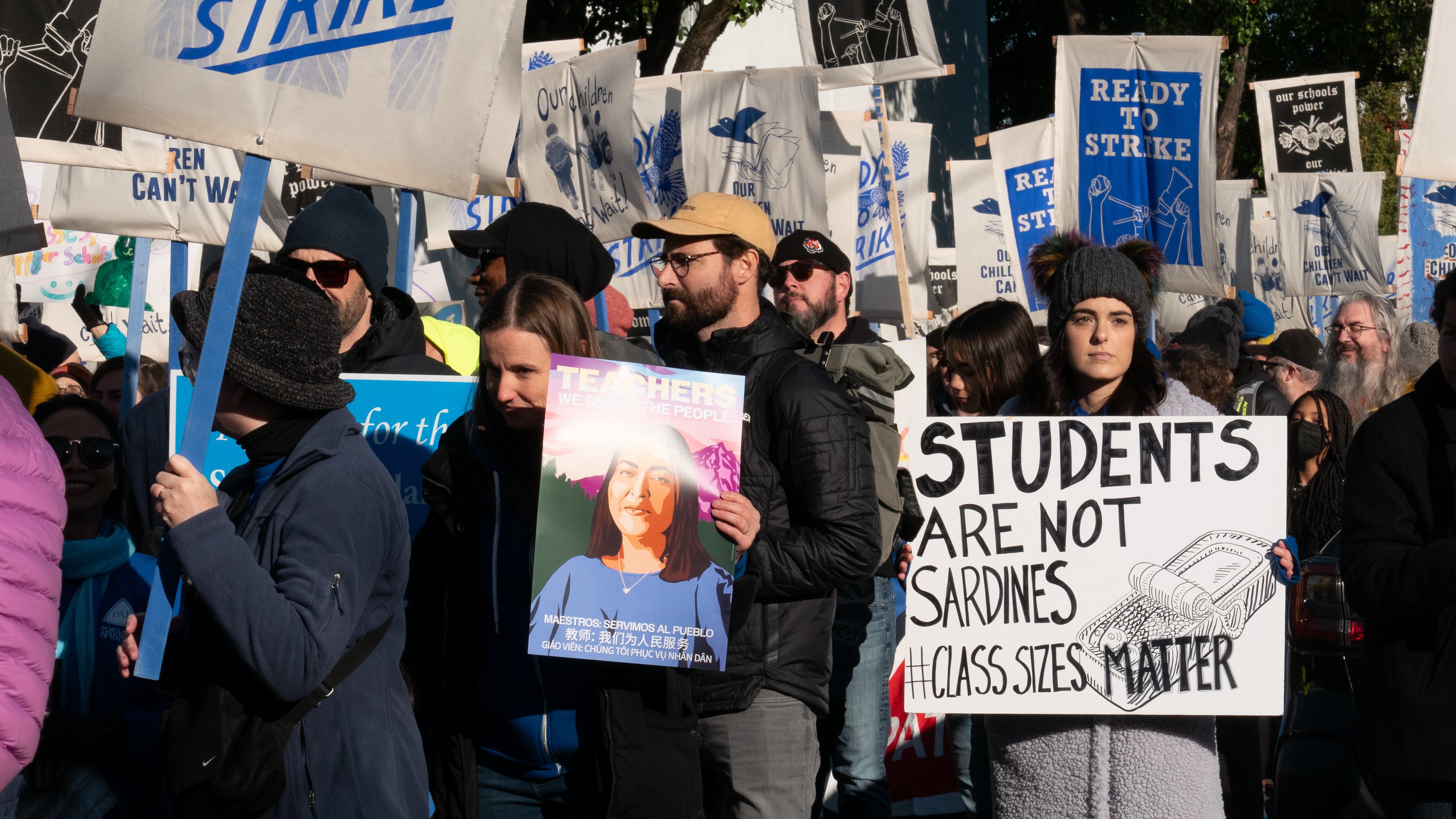After 10 months of bargaining with Portland Public Schools, teachers will walk off the job Nov. 1 in a first-of-its-kind strike, immediately closing all 81 PPS schools in town. The chief sticking points in contract negotiations are wages, planning time and class size.
The school district confirmed Oct. 31 negotiations had failed, via an email sent to parents shortly before 7 pm. “Due to a teachers’ strike, all schools will be closed tomorrow, November 1,” it read. “If the strike continues through November 3, report cards will be delayed.”
At a time of increased union action across the country—including recent massive strikes by the United Auto Workers and Hollywood actors and writers—cultural momentum is on the teachers’ side.
In polling numbers released last week by the Portland Association of Teachers, 81% of Oregonians and 88% of Portlanders supported a strike to ensure fair compensation for teachers. The polling firm GBAO Strategies asked 1,000 registered voters in Oregon about the strike Sept. 14-19.
“Our kids don’t deserve the bare minimum; they deserve everything,” said Angela Bonilla, PAT president, from a makeshift stage in the back of a pickup truck at a teachers’ march west across the Burnside Bridge on Oct. 28. “And we will not stop fighting until we can give them the schools that they deserve.”
Enough teachers and public school families attended the Saturday morning rally to fill the Burnside Bridge with a sea of PAT-blue shirts. They chanted “Union power!”
What’s not on the teachers’ side, according to Portland Public Schools: the financial reality of the school district.
“We are not unwilling to accept their full contract proposal; we are unable,” says Dr. Renard Adams, PPS’s chief of research, assessment and accountability and a member of its bargaining team. “We are not a private company. We have fixed revenue, and a strike will not change that.”
At an Oct. 27 press conference, Adams said PAT’s proposal (see chart below) would force the district to make $277 million in cuts. Indeed, Gov. Tina Kotek, a longtime labor ally, said in an Oct. 30 press conference that the teachers’ demands were unworkable.
Becky Pringle, president of the National Education Association in Washington, D.C., applauds Portland teachers for prioritizing students in their bargaining asks, including those for smaller class sizes and additional mental health supports.
“They’re using this mechanism of collective bargaining to get the attention of the district and say this is not OK for our kids,” Pringle tells WW. “They need more from you.”
Teachers earn 25% more on average in states where they have collective bargaining power; school support staff earn 17% more, Pringle says. Still, the average U.S. teacher salary is 6.4% less today than it was a decade ago when adjusted for inflation, Pringle says.
“No one goes into teaching to make a lot of money, but we do expect that we will be able to take care of our families,” Pringle says.
Here’s a look at where the two sides stood going into final mediation this week. These are their “last, best and final offers” as well as some state and national context to help make sense of the numbers.


